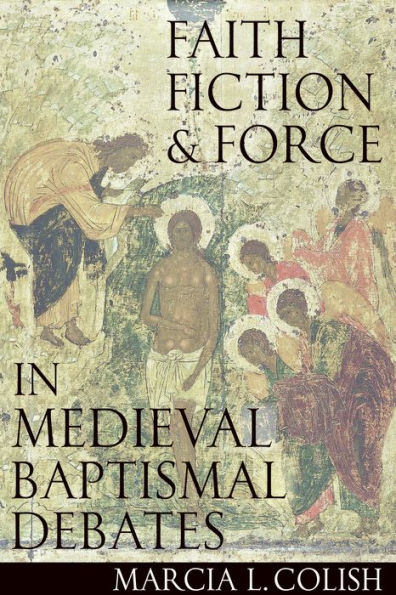The answer to this question is neither simple nor straightforward. As this fascinating contribution to medieval intellectual history shows, medieval ideas on baptism, though seen as necessary for salvation, were far from unanimous. Marcia Colish demonstrates persuasively that, from the patristic period through the early fourteenth century, there was vigorous debate surrounding baptism by desire, fictive baptism, and forced baptism. Drawing on a wide and interdisciplinary range of sources that goes well beyond the writings of theologians and canonists to include liturgical texts and practices, the rulings of popes and church councils, saints' lives, chronicles, imaginative literature, and poetry, Faith, Fiction and Force in Medieval Baptismal Debates illuminates the emergence and fortunes of these three controversies and the historical con- texts that situate their development. Each debate has its own story line, its own turning points, and its own seminal figures whose positions informed its course. The thinkers involved in each case were, and regarded one another as being, members of the orthodox western Christian communion. Thus, another finding of this book is that Christian orthodoxy in the Middle Ages was able to encompass and accept dis- agreements both wide and deep on a sacrament seen as fundamental to Christian identity, faith and practice.
The answer to this question is neither simple nor straightforward. As this fascinating contribution to medieval intellectual history shows, medieval ideas on baptism, though seen as necessary for salvation, were far from unanimous. Marcia Colish demonstrates persuasively that, from the patristic period through the early fourteenth century, there was vigorous debate surrounding baptism by desire, fictive baptism, and forced baptism. Drawing on a wide and interdisciplinary range of sources that goes well beyond the writings of theologians and canonists to include liturgical texts and practices, the rulings of popes and church councils, saints' lives, chronicles, imaginative literature, and poetry, Faith, Fiction and Force in Medieval Baptismal Debates illuminates the emergence and fortunes of these three controversies and the historical con- texts that situate their development. Each debate has its own story line, its own turning points, and its own seminal figures whose positions informed its course. The thinkers involved in each case were, and regarded one another as being, members of the orthodox western Christian communion. Thus, another finding of this book is that Christian orthodoxy in the Middle Ages was able to encompass and accept dis- agreements both wide and deep on a sacrament seen as fundamental to Christian identity, faith and practice.

Faith, Fiction & Force in Medieval Baptismal Debates
384
Faith, Fiction & Force in Medieval Baptismal Debates
384Hardcover

Product Details
| ISBN-13: | 9780813226118 |
|---|---|
| Publisher: | The Catholic University of America Press |
| Publication date: | 06/28/2014 |
| Pages: | 384 |
| Product dimensions: | 6.30(w) x 9.20(h) x 1.20(d) |
